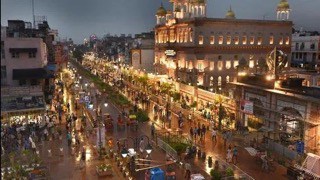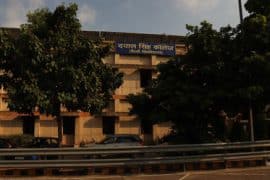In the heart of Old Delhi lies the once royal Moonlight Square. Today, it is the largest wholesale market in the world – and still quintessentially Delhi.
Have you ever watched a Hollywood movie with a scene that takes place somewhere in India? It’s usually a market filled with people, there’s constant hustle and bustle, some really old architecture and sometimes the sound of a mosque’s call for prayer. That, my friends, is Chandni Chowk.
Chandni Chowk was constructed in the 17th century by the fifth Mughal emperor, Shah Jahan, as a part of his extravagant royal capital Shahjahanabad. As the central street of the walled city, Chandni Chowk was the path between the Red Fort and a gate on the outer wall of the city. Historical records indicate that Chandni Chowk or “Moonlight Square” got its name from a pond that reflected the moon. However, the British built a clock tower over it which collapsed in 1951.
Ancient? Yes. The moment you exit the Chandni Chowk or the Lal Quila metro station (on the yellow and violet lines respectively), you feel the weight of its four centuries of existence. Sure, there’s a McDonald’s and Haldirams around the corner, but the Red Fort looms in the background; a steady reminder of history and emperors. The Jama Masjid’s calls of prayer are greeted with respect from the people and are an important part of Chandni Chowk’s day. Make no mistake, the Moonlight Square is drenched in history and culture.
Historic as it may be, there is a different reason why this place is also a beloved hang out spot for Delhites: the food. The best example? Chandni Chowk is home to a street called “Paranthe Wali Gali ” filled with parantha vendors that have been plying their trade for generations. It’s also home to Karim’s, the original of the extremely popular restaurant chain. Established in 1913 with the intention of selling royal food to the common man, this restaurant has been declared one of the top restaurants in Asia by Times Magazine. Yet, it has not lost its roots and is still as common as it gets – until you take that first bite.
Food isn’t everything people flock to the Moonlight Square for, though; it is also the world’s largest wholesale market. The festival season sees it turn into a somehow even more massive sea of bodies as everyone rushes to find the best deals on dry fruits, fairy lights and decorations. Having first hand experienced the Diwali madness that possesses the square, it takes all my self-control to not name this piece “the Choked Lanes of Chandni Chowk ”. However it’s not all intimidating: most vendors group together in specialised bazaars based on what they offer – quite like the artisans and entertainers that populated it centuries ago grouped together according to their craft. And for all its fang-bearing to the unacquainted, Chandni Chowk’s people are generally welcoming and willing to help out. Still, don’t let your guard down, the crowds can be an easy place to be pickpocketed.
As a Delhite who’s somehow never frequented the lanes of Chandni Chowk until his college years, I see why Bollywood falls for its allure in movies like Delhi-6 and Rockstar. In its 400 years it has seen kings and colonists stake their claim – and outlived every single one. Its gardens and canals have long disappeared and its buildings are falling apart but it lives on, as if refusing to be lost in history. It is proud, it is intimidating, it is loud, it is charming and it doesn’t care who you are. Quite like Delhi.
Feature Image Credits: Hindustan Times
Read Also: DUB Travels: Silent Nights in Sunder Nursery
Siddharth Kumar





Comments are closed.